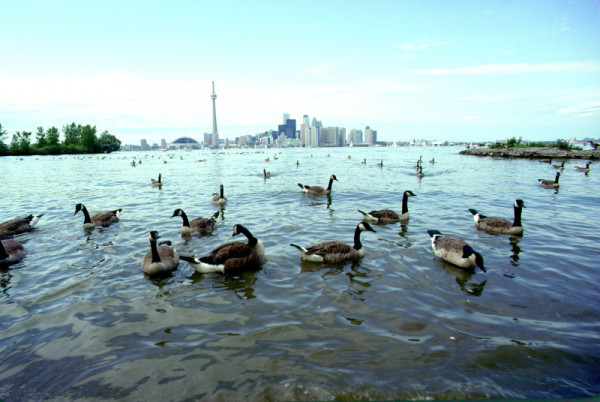The magnificent Great Lakes
Next in the WWF Water Wednesday blog series by Love Nature is a fascinating look at the Great Lakes. Learn interesting things you may have not known about the Great Lakes watershed is the planet’s biggest freshwater ecosystem, encompassing 223,948 square kilometres. Millions of Canadians and Americans rely on the lakes and surrounding watershed for their survival, as do a huge array of wild species, their protection is vital.
Great Lakes’ waters travel 3,500km
It all begins with the world’s second largest lake by surface area, the aptly named Lake Superior. Along its journey, depth and elevation decline progressively, varying from Lake Superior’s 1,300ft depth to Lake Erie’s 210ft and dropping the equivalent of a 100-storey building from start to finish. Most of this drop-off occurs subtly, but when it comes time for Lake Erie to unite with Lake Ontario, things get pretty spectacular. The Niagara River, which connects the two lakes, is home to one of the world’s greatest waterfalls: Niagara Falls.
From the mouth of Lake Ontario, the mighty St. Lawrence River takes over and eventually discharges waters from the Great Lakes watershed into the Atlantic Ocean.
The Great Lakes watershed holds 18 per cent of the world’s freshwater reserves, 80 per cent of North America’s
Given its massive size, it’s no big surprise that the Great Lakes watershed supplies around 40 million people between Canada and the United States with drinking water. This huge watershed also nurtures an array of industries. About 56 billion gallons of water a day are diverted for municipal, industrial and agricultural use.
The Great Lakes’ size also makes them a super-shipping channel, allowing the transport of an estimated 200 million tons of cargo annually.
According to Water Without Borders’ 2012 assessment, the Great Lakes Basin brings in $62 billion in yearly wages. Niagara Falls alone is estimated to draw some 12 to 14 million visitors a year.
The Great Lakes watershed is home to more than 3,500 types of plants and animals and 250 species of fish
One in three Canadians and one in 10 Americans live in the Great Lakes watershed. The Great Lakes first began to form at the end of the last glacial age some 14,000-years-ago, and people are thought to have occupied the Great Lakes watershed for 10,000 of those years.
Equally important for wildlife, the Great Lakes watershed is home to many big mammals like moose, black bears, foxes, grey wolves, white-tailed deer, river otters, beavers, bobcats and the Canadian lynx. Notable bird species include wood ducks, great blue herons, bald eagles, piping plovers, and snowy owls.
Abundant in aquatic and semi-aquatic environments like wetlands and marshes, the Great Lakes host rich fish life too, like walleye, lake sturgeon, trout, largemouth and smallmouth bass, yellow perch and muskellunge. Unfortunately, there are also plenty of invasive species in the Great Lakes too, such as round goby, sea lampreys and zebra mussels.
The Lakes are heavily safeguarded but threats always loom
According to WWF’s Watershed Report, the Great Lakes face very high threat levels from pollution, invasive species, habitat fragmentation and overuse of water.
Another threat is climate change, which has also begun to impact the Great Lakes. More extreme and less predictable weather causes more frequent sewage surges and larger land-runoff events. Warming temperatures, altering rain patterns, and drastic year-to-year water level and ice cover changes are also causing worry.
But for as many threats as there are facing the Great Lakes there’s also an amazing amount of people working to safeguard the Great Lakes, including those who have received grants from the Loblaw Water Fund to ensure the Lakes stay healthy amid mounting threats. The WWF Watershed Report health assessment for the Great Lakes Watershed shows it is still in overall fair health, making the watershed work on the Great Lakes much more important to continue.
Protected lands are also helping to safeguard the health of the Great Lakes watershed. There are four UNESCO biosphere reserves within the Great Lakes watershed, plus about 150 state and provincial parks.
To learn more about the Great Lakes watershed’s health and current challenges visit watershedreports.wwf.ca.
Written by Jennifer Huizen
Tune in every Wednesday at 8 p.m. ET/PT for WWF Water Wednesdays on Love Nature to learn more about current water conservation issues from around the world.


